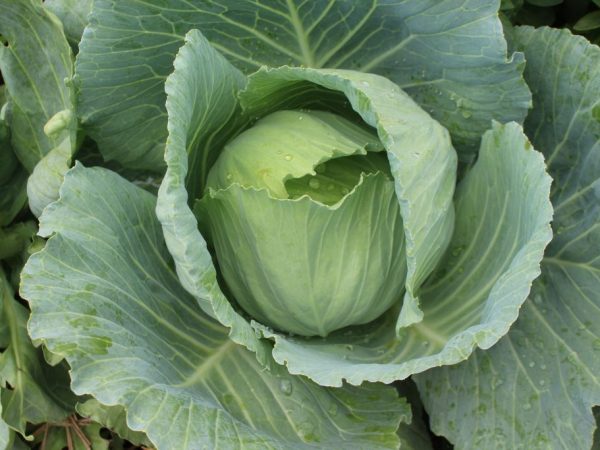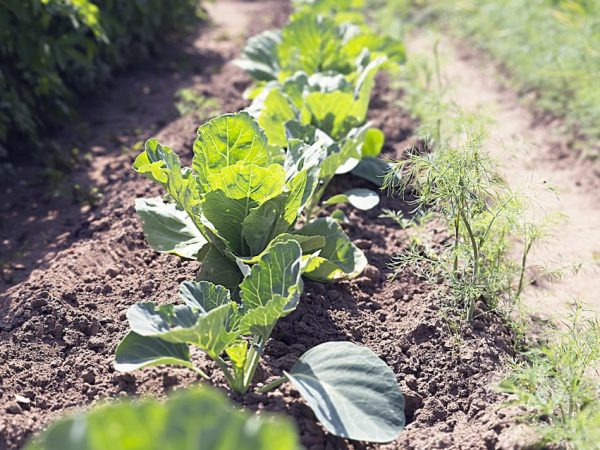Characteristics of cabbage variety Pandion F1
Cabbage Pandion F1 is an early white hybrid. In Russia, it appeared in 2005 after a short amount of time, thanks to its positive qualities, it gained great popularity in agricultural production. Currently, it is the most popular variety of early white cabbage among summer residents and gardeners. The description of Pandion cabbage is detailed in the article.

Characteristics of cabbage variety Pandion F1
Characteristic
Early cabbage ripens very quickly:
- full ripening period - 85-110 days;
- the ripening period of seedlings is 40-55 days;
- the ripening period of the fruit is 45-55 days (the period after planting the seedlings).
When planting, cabbage does not occupy a large area on the site: 65-70 thousand hybrids are located on 1 hectare. Productivity - 280-510 centners from 1 hectare of land. After ripening, the heads of the hybrid can be on the site for a long time, while they do not crack. The hybrid is resistant to fusarium.
Cultivation is possible both by seedlings and by sowing in open ground.
For an earlier harvest, cultivation in greenhouses is recommended. The optimum temperature for good plant development is 17-21 ° C. If the temperature is below normal or exceeds 25 ° C, this is bad for the development of the heads.
Description
The heads of the plant are quite resilient, they perfectly tolerate transportation over long distances. The average weight of a head of cabbage is 1.5-2 kg.
Description of Pandion F1 cabbage:
- round shape;
- the structure is dense;
- Green colour;
- internal stump of medium length;
- the outer stump is short.
The leaves of the hybrid are thin, bubbly, rich green with a light waxy coating; horizontal leaf rosette; the leaf plate is slightly wavy at the edges.
Application
Cabbage has a pronounced taste and is intended for fresh consumption (it loses its properties during thermal processing). It is not recommended to store it for a long time in the basement and for the preparation of winter preparations.
Care

Plants need good care
With greenhouse cultivation of a hybrid, sowing cabbage seeds begins from the third decade of March. If the cultivation will take place in closed film greenhouses, sowing begins in the first decade of March.
Before sowing, the seeds are calibrated; they must exceed 1.5 mm in diameter. After that, they are kept in a solution of potassium permanganate, and then sown in a greenhouse directly into the ground or in special containers.
After emergence, the first shoots are thinned out, leaving only the strongest and largest plants.
Temperature
The air temperature during seed ripening should not rise above 20 ° C. The water temperature when watering seedlings should be 18-20 ° C. Watering is carried out as the liquid evaporates, making sure that the soil is not very dry or waterlogged.
Picking
When the hybrid has several leaves, picking begins. Seedlings are transplanted into other containers: cassettes, plastic cups or pots. You can dive seedlings into the same boxes, but plant them less often.Large plants should be dived, and small ones should be removed.
Landing in open ground
When the plant has 5-7 leaves, planting in open ground begins. The age of the plant for this period of time is approximately 45 days. The air temperature when planting vegetables should be at least 18-19 ° C. Soil temperature - not lower than 13 ° С. It is best to plant seedlings in rainy, cloudy weather or in the evening; highly undesirable in a hot period.
The distance between the seedlings should be 25-30 cm, and between the beds - 45-50 cm. The plant should be deepened at the same distance as when growing in boxes.
Before planting seedlings, the soil is leveled, small depressions are made and watered abundantly. After planting the seedlings, the soil is compacted, a crust forms. To prevent this, the earth is mulched, after heavy rainfall, it is loosened.
At the very beginning of growth, the seedlings are very vulnerable, therefore it is important to carry out processing in a timely manner. A ripe crop is considered after the weight of the head of cabbage is 0.5-1 kg.
Top dressing
For the normal development of vegetable crops, regular feeding is carried out during ripening in the first and second half of the growing season. The first feeding takes place 2 weeks after planting the seedlings, the second - 2 weeks after the first fertilization.
Rotted manure or bird droppings are used as fertilizers. For 1 sq. m use 300-500 g of manure. Poultry droppings are used 600-800 g per 1 sq. m.
Pests and diseases
At all stages of the growing season, early varieties of cabbage can be exposed to various diseases or harmful insects. Often such pests are cabbage spring fly, cruciferous flea, aphid, moth, bear. In order to protect vegetable crops from the negative impact of the environment, it is advised to carry out treatment with the preparations "Belofos", "Corsair", "Rovikur".
The Pandion hybrid is immune to fungal diseases (Fusarium). Other types of disease can be prevented by following the rules of crop rotation, seed treatment and cultivation. Often, infected plants cannot be treated and must be disposed of. So that healthy crops are not affected, they are treated with Topaz, Baktofit, Fitoflavin.
Conclusion
Pandion F1 - an ultra-early variety of white cabbage; which is suitable for growing in plastic greenhouses, indoor and outdoor; it has a high yield and resistance to stress; has a presentable presentation.


